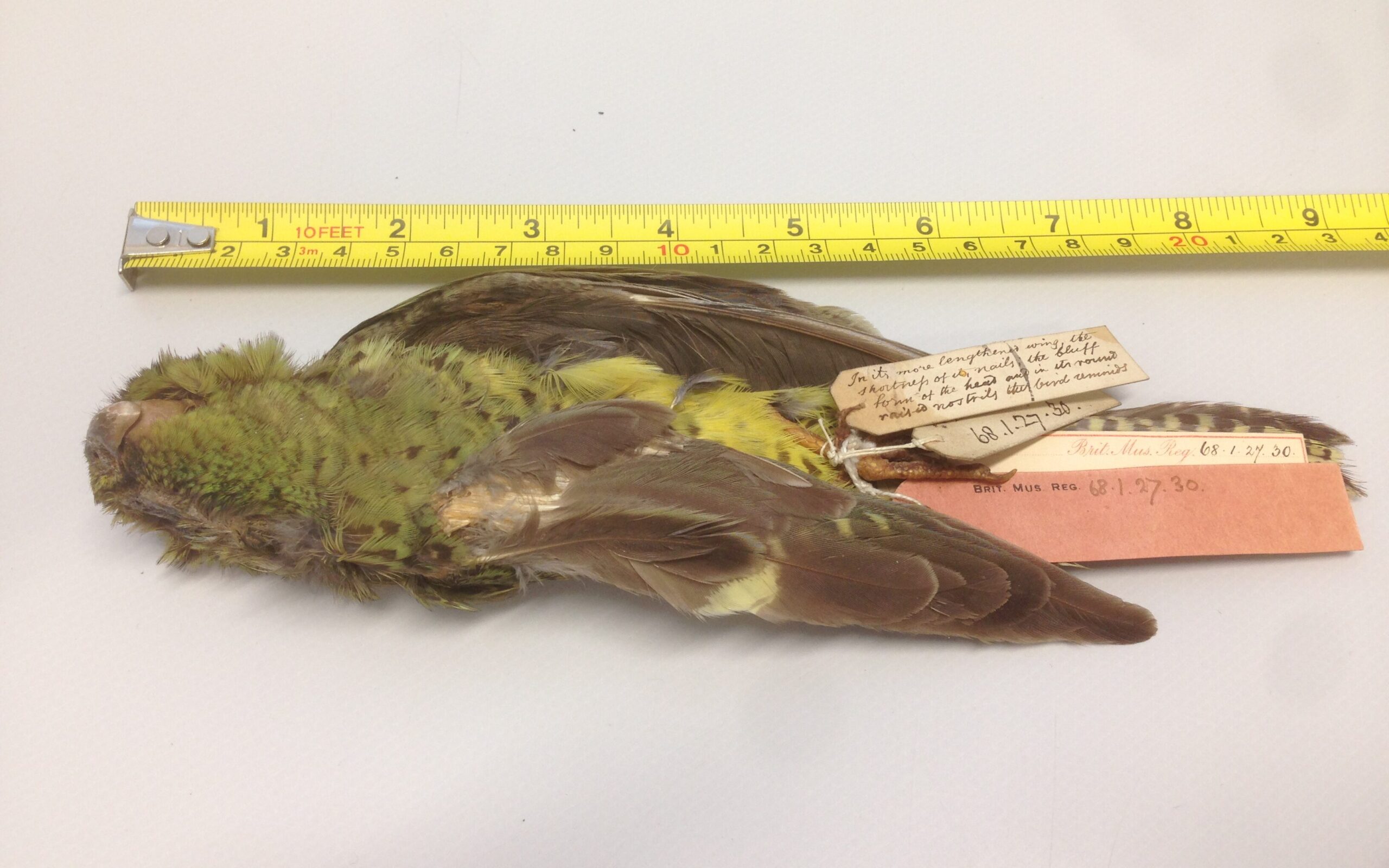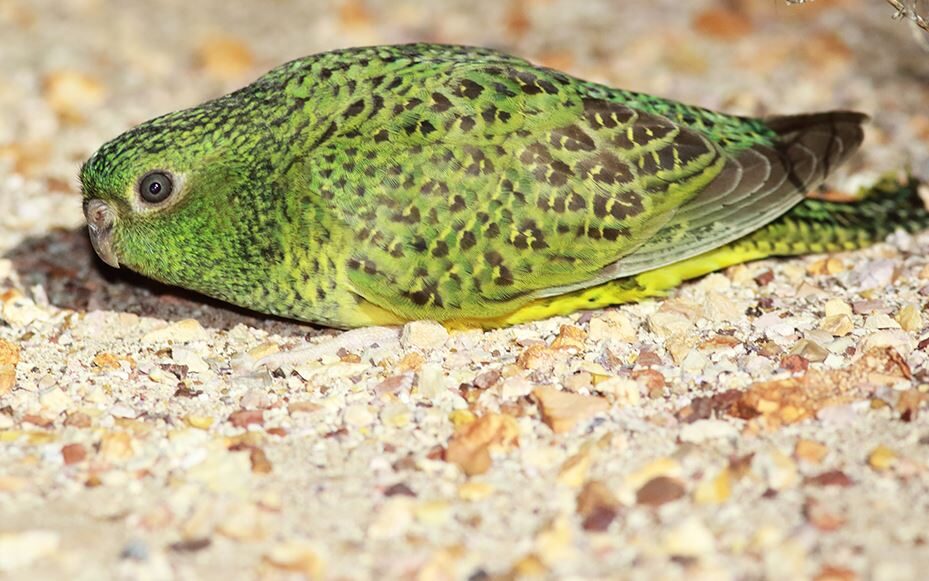Night parrot’s wonky skull could be its superpower

For just over 100 years, Australia’s endemic night parrot (Pezoporus occidentalis) was considered extinct.
But after a series of unconfirmed reports, and the discovery of two dead specimens in 1990 and 2006, photographs and video footage captured in 2013 by naturalist and wildlife photographer John Young confirmed the species’ modern existence, albeit in extremely low numbers.
Since then the night parrot has remained elusive, making studying the species a difficult task.
So, with a lack of live birds or fossil remains available to science, researchers have found a creative way to study the species – using an historic specimen housed at London’s Natural History Museum.

The specimen was used in 1861 by ornithologist John Gould to first formally describe the species in scientific literature.
The Flinders University team of paleontologists used the specimen to investigate its anatomy using high-resolution CT scans.
“In our work we typically study the anatomy of extinct animals, but we also use our skills to investigate living species,” says Flinders University researcher Dr Elen Shute.
“We hope ecologists can make the most of the next 10 years to find out as much as possible about the biology and behaviour of night parrots and work out how many there are, how many locations they survive in, and what we need to do to put their populations on the upward trajectory.”
Cranial adaptations
The scans showed the night parrot has an asymmetrical skull and ears (similar to owls), to locate where sound is coming from.
This could explain why the species can survive with limited night vision in the dark outback.
The external ear region is also very large, researchers found.
“We were impressed by how far one of the night parrot’s ears stick out sideways, and also the sheer size of the external ear region,” says senior co-author, Flinders Professor of Palaeontology Gavin Prideaux.
“Taking up about one-third of the length of its head, its enlarged ear chambers may act like amplifiers which in turn would increase the volume of sound transferred to the inner ears.”
These advanced audio capabilities likely compensate for the night parrot’s small eyes and optic nerves, says Dr Shute.
“Examination of the skull showed how the enlarged ear chambers appear to constrain the maximum size of the night parrot’s eyes yet they are able to fly up to 30 km at night to forage before returning to roost at sun-up.
“By measuring the scleral ring – a ring of bone that sits inside the eyeball – and comparing it to those of other birds, we found that a night parrot’s cornea is about as small as it can get while still allowing visually-guided nocturnal flight. A millimetre or two smaller, and they really would be flying blind.
“This is probably why ornithologist John Gould described the night parrot as having an outsized or ‘bluffy’ head compared to its body – evolution has crammed as much as it can into its skull.”

Benefits of CT scanning technology
“The use of non-destructive CT imaging is paramount in studies on such rare material,” says co-author Dr Alice Clement, from Flinders University’s Palaeontology Laboratory.
“In using CT scanning, we were able to digitally peel back the preserved layers of feathers and skin to reveal the skeleton beneath without any damage to the specimen. Furthermore, digital models of the night parrot’s bones are now available for researchers around the world to examine without the need to capture new animals.”
The study, ‘Cranial adaptations of the Night Parrot (Psittaculidae: Pezoporus occidentalis), a cryptic nocturnal bird’ (2023) by Elen R Shute, Alice M Clement and Gavin J Prideaux, has been published in the journal Emu – Austral Ornithology.




